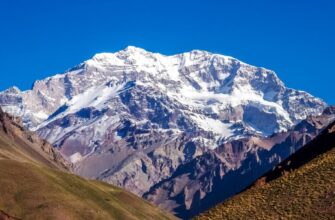If you are a hiker and nature lover, you’ve probably heard of the Tour du Mont Blanc (TMB). You’re about to experience one of the most beautiful views ever. It’s a 100-mile hike around the Mont Blanc mountain, cutting across France, Switzerland, and Italy. The hike’s difficulty level is moderate, with no real altitude gains or mountaineering equipment required.
Hence, climbing and hiking Mont Blanc is always challenging, and the most incredible things can happen, from windy weather to evacuation from the summit by helicopter. While travel insurance will protect you from injuries, we help you prepare well and tell you everything about the Tour du Mont Blanc.
What is the Hiking Tour du Mont Blanc?
If you’ve come to enjoy a ski vacation in the Alps, you can also go on a famous Mont Blanc hike. But first, you must pick the right time for your adventure. We’ll talk about that in a bit, but for now, let’s dive into everything you should know about the terrain, beyond the stunning Instagram photos of the area.
The Tour du Mont Blanc is a circular hiking trail that takes you around the highest peak in Western Europe (Mont Blanc mountain height is 4,809 meters). Here are some more Mont Blanc mountain facts:
Distance: 170 km (about 105 miles).
Mont Blanc mountain elevation gain: Over 10,000 meters (32,800 feet).
Maximum Elevation: 2,526 meters (8,291 feet) at Col des Fours.
Duration: Usually takes 7 to 11 days, depending on your pace and route choice.
Difficulty: Moderate to challenging — perfect for experienced hikers.
Start Point: The journey usually begins in Les Houches (France) or Chamonix (France), easily accessible from Geneva, Switzerland, a major international hub.
End Point: Typically ends where it started, though you can choose alternative starting and ending points like Courmayeur (Italy) or Champex-Lac (Switzerland).
First Completed By: Christian Almer in 1881, who was the first person to climb Mont Blanc.
Fatalities: Though generally safe, the trail has seen deaths due to unpredictable mountain weather and challenging terrain.
What is the Best Time to Climb Mont Blanc?
Timing is everything when planning your Mont Blanc climb and hike. The best time of year to hike Mont Blanc is generally between June and September. According to reviews and recommendations, the best month to climb Mont Blanc is August — the driest month with the least snow at the summit. However, since it’s also the most crowded month (as most tourists prefer an easier and more predictable route), you might consider summiting a bit earlier or later.
Mont Blanc Weather & Temperature Overview
Summer is the best Mont Blanc climbing season, as all the mountain huts and facilities are open. However, each month has different conditions, and knowing what to expect is crucial to packing properly.
| Month | Temperature (°C) | Weather Conditions |
| June | 5-20°C | Snow is still visible at higher altitudes, cooler mornings. Trail opening. |
| July | 10-25°C | Warmest weather, stable, but very crowded. Perfect for hiking. |
| August | 10-23°C | Similar to July, some afternoon thunderstorms are possible. |
| September | 5-18°C | Cooler, fewer crowds, early snow at higher altitudes. |
| October | 0-12°C | Snow starts, some refuges close, challenging conditions. |
| November | -5-5°C | Snow and closed refuges, trail conditions deteriorate. |
| December | -10-0°C | Severe winter weather, snow-covered trails, closed shelters. |
Winter is not the best time of year to hike Mont Blanc due to severe frosts (down to -30°C), deep snow, high avalanche risk, and unstable weather conditions with hurricane-force winds and heavy snowfalls.
What are the Tour du Mont Blanc Climbing Routes?
Selecting the right route for your Tour du Mont Blanc climbing trip is essential to preventing injuries and reaching the Mont Blanc peak. The trail has many iterations, from the classic Mont Blanc hike route to briefer and more arduous alternatives. Luckily, the Mont Blanc trail map is full of changes and suits every level of traveler.
The classic circuit is the most popular, but there are various alternatives since everyone does not have the same fitness level and amount of free time. One could go for the 3-day hike, the full 10-day trek, or anything between. Let’s have a closer look at the Mont Blanc mountain map.
Classic Route
The classic Tour du Mont Blanc starts in Les Houches, France, and follows the traditional counterclockwise path. Depending on your plan, it takes 7-11 days to complete.
- Distance: 170 km.
- Difficulty: Moderate to challenging, depending on the sections.
- Highlights: Views of Mont Blanc, Col de la Seigne, Grand Col Ferret, and Lac Blanc.
Shorter Hike Options
Are you not ready to spend 10 days just wanting to walk and admire the beauty of Mont Blanc without much effort? Well, let’s say, physically, you’ll have to work hard anyway, but there is a shorter and easier route on the map of Mont Blanc.
- 3-day hike: You can shorten the trek and hike from Courmayeur (Italy) to Chamonix (France), covering key sections.
- 5-day hike: This variation covers a significant portion of the trek but in a more time-efficient way.
High-difficulty Mont Blanc Hiking Routes
For experienced hikers, more challenging sections, such as Col des Fours or Fenêtre d’Arpette, offer a more difficult Mont Blanc mountain climb and incredible views.
How to Prepare for the Tour du Mont Blanc
Can a beginner climb Mont Blanc? Yes, but climbing Mont Blanc mountain without preparation is not recommended. After all, altitude should be considered. Fortunately, at the foot of Mont Blanc, there are training areas where you can prepare your body for altitude changes, try skiing, go on excursions, and learn about the history of Mont Blanc mountain.
Physical Preparation
One has to be physically fit to do the Tour du Mont Blanc, having endurance, strong and healthy legs and joints, a strong back, and oxygen. You can get prepared from home if the terrain is suitable. Proper training to climb Mont Blanc (by the way, even hiking calls for preparation) will make you enjoy your travelling and confidently face the tough sections:
- Cardio: Aim to develop stamina through long-distance running, cycling, or swimming.
- Weights: Do some leg and core weight training, which includes backpacking with a weighted pack.
- Backpacking: Hike around while wearing the backpack fully loaded to resemble conditions on the trip.
Documents & Insurance
Before hiking the Tour du Mont Blanc, ensure you have all the required documents (Passport/ID) and insurance. Travel insurance is insufficient to cover potential injuries sustained in the mountains. And what if you need urgent evacuation? To avoid paying out of pocket, include hiking and mountain climbing in your insurance policy.
Packing List for the Tour du Mont Blanc
Your packing list should be carefully selected to ensure you’re prepared for the weather conditions and terrain along the Mont Blanc hike map. Here’s what you’ll need to bring:
- Hiking boots: Waterproof and comfortable.
- Layered clothing: Base layers, fleece, and a waterproof jacket.
- Trekking poles: For better balance and knee protection during descents.
- Backpack: 30- 50 L pack for essentials.
- Other essentials: Sunscreen, headlamp, first-aid kit, and refillable water bottle.
What Is the Cost of Hiking the Tour du Mont Blanc?
The total cost of Tour du Mont Blanc varies depending on your choice of accommodation, meals, and transportation.
- Budget: You can expect to spend €50-80 per day on a budget trek (staying in refuges or camping).
- Mid-range: For a more comfortable trek, €100-160 per day (more comfortable mountain huts and meals).
- Luxury: A luxury hiking Mont Blanc price exceeds €200 per day and offers premium accommodation, private guides, and gourmet meals.
What is the Climbing Mont Blanc price?
A guided climb of Mont Blanc typically costs between €1,000 and €1,500 per person. This usually includes the guide’s services, necessary equipment rental (such as crampons, harness, and helmet), and sometimes accommodation and meals during the climb. For all-inclusive packages, including airport transfers, hut stays, and additional pre-climb training, the price can go up to €2,500 or more.
Can anyone climb Mont Blanc without a guide? This is possible since the route is well-marked and the trail is popular among climbers and hikers. However, hiring a guide is better if you have no experience in long mountain treks. You can find one in Chamonix Mont Blanc, where certified guides can lead you safely and make your journey more enjoyable.
Post-trekking Recovery: What to do After the Hike
Once you complete hiking or climbing Mont Blanc, it’s time to focus on recovery. Don’t be surprised — around 60-70% of people who climb above 3,000 meters need recovery due to fatigue and potential altitude sickness. So, how do you get back to normal?
- Rest & Relax: Take some time off and relax your muscles. Visit Chamonix for a luxury spa day to rejuvenate after the strenuous trek.
- Stretching: Focus on stretching your legs, hips, and back to alleviate muscle soreness.
- Massage: Consider getting a deep-tissue massage to help with recovery.
- Hydration: Rehydrate with electrolytes and enjoy nutritious meals to help your body recover.
Conclusion: Ready for the Tour du Mont Blanc?
So, hiking and climbing Mont Blanc is possible for beginners and experienced tourists, as there are easy and challenging routes. Preparation? Absolutely necessary, just like insurance. After all, the mountains, altitudes above 3,000 meters, and physical exertion can break even the strongest. The trails are all civilized and well-marked, so getting lost is impossible, but for reliability, it’s better to join a tour or a guided group of travelers. When heading out on this Tour du Mont Blanc adventure, leave a few days for recovery at local spas or ski resorts — the feeling is incredible!
FAQ
How Long Does it Take to Climb Mont Blanc?
The fastest climbs take 2 days, but with acclimatization and safer approaches, it can take 3-5 days. All necessary gear and guides can be rented at ski resorts or villages at the mountain’s foot.
Can You Hike Mont Blanc Without a Guide?
Yes, the Tour du Mont Blanc is well-marked, and experienced hikers can do it self-guided. However, climbing Mont Blanc’s summit is more technical and requires mountaineering skills.
How Long to Hike Mont Blanc?
The Tour du Mont Blanc (TMB) is a 170 km trek typically taking 10 days. Faster hikers can complete it in 7-8 days, while a more relaxed pace may take 11-12 days.
Can I Climb Mont Blanc Without a Guide?
Yes, but climbing Mont Blanc with a guide is a better option unless you have experience in high-altitude mountaineering and glacier travel.
Where is Mont Blanc Mountain Located?
Mont Blanc is near Switzerland and on the border between France and Italy.
How High is Mont Blanc Mountain?
Mont Blanc stands at 4,805 meters (15,766 feet).
Is Mont Blanc the Highest Mountain in Europe?
Mont Blanc is the highest mountain in Western Europe, but Mount Elbrus (5,642m) is the tallest in Europe.








